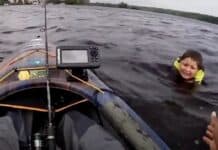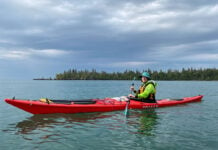There is a recurring tailgate debate that flares up in the whitewater world questioning one of our long-standing rules: if you carry a rope, carry a knife.
Why you should always carry a rope and knife on the water
When Mike Reisman died on the Ocoee River in 1997, some started questioning this logic. Reisman flipped, and possibly due to a blow to the head, was rendered unconscious, or at least helpless in rescuing himself. His paddling partners had difficulty rolling him up, and his pull-tab was tucked under so they couldn’t pop his skirt. One of his rescuers knifed the skirt to free him, inadvertently slicing Reisman’s leg and possibly severing his femoral artery. It was reported that Reisman died due to the loss of blood.
Rescue gear such as throw ropes and knives, argue the skeptics, can do more harm than good in untrained hands. It’s an appealing argument, but it’s hollow. Exactly what kind of training is required in knife use? Occurrences of injury by river knife are rare; most of the times our knives draw blood is when they are employed to shave outfitting foam or spread peanut butter.
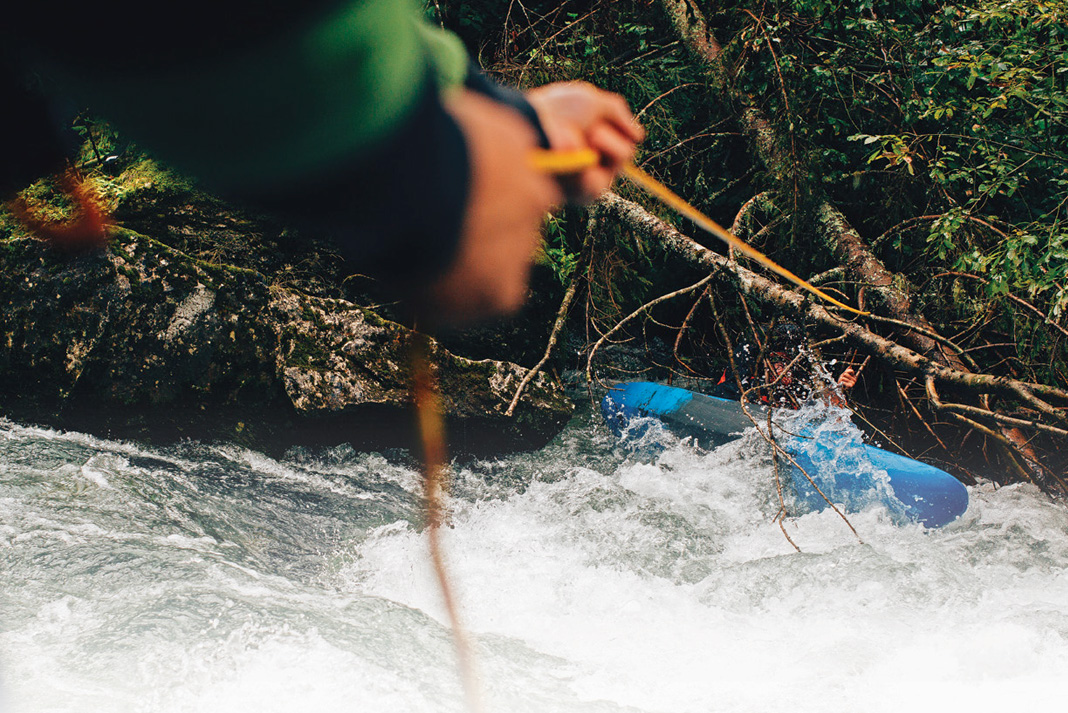
Reisman’s would-be rescuer was actually a doctor, defying the skeptics’ logic of “wrong or untrained hands.” At issue here is the judgement of would-be rescuers, not the tools they carry in their boats.
A river rescue case study
Consider this: Ottawa River, late ‘90s, freestyle heyday. Right side Horseshoe Hole, a national team paddler flat pins his Wave Sport X to the bottom the river. He swims free but the boat stays put, just visible below the surface in the trough of the hole—a very strange scenario.
There were about two dozen people there that evening, all either elite paddlers or professional raft guides out to play. Not one throw rope was present. We looked at each other sheepishly, unable to do anything but shrug our shoulders in disbelief. It was painfully obvious what the repercussions would have been if the paddler had been in his boat rather than standing safely on shore.
To suggest that certain paddlers should not carry a rope or a knife is misdirected—no tools meant we had no options.
To urge caution and second thought in stressful and confusing situations, I wholeheartedly support. A rope and a knife provide the basic staples required to improvise a rescue and are not inherently harmful. Prudent judgement must employ them properly, and this judgement is hard earned. If you have never encountered a desperate situation on a river, it is hard to predict how you will react. The reaction of an experienced rescuer will change depending on whose life is at stake. Having tools at least ups the odds that someone will carefully consider how to use them.
Ropes and knives are different than pulleys, prusiks, paddle hooks and other technical rescue gear. These other gadgets are only useful with specific training and regular refresher courses. In a stressful situation there is too little time, let alone cognitive capacity, to add complexity to an already complex situation.
Always follow the “tool rule”
I stand behind our long-standing rules: If you bring a boat, bring a rope. If you carry a rope, carry a knife. At the very least, these rules reinforce the moral obligation we have to our fellow paddlers. At best, we have options to consider when things get weird. If not ourselves, perhaps someone else will know what to do with them when it really matters.
Jeff Jackson is the co-author of Managing Risk: Systems Planning for Outdoor Adventure Programs. Alchemy appears in each issue of Rapid magazine.
Throwing him a peanut butter sandwich is not an option. | Feature photo: Anze Osterman


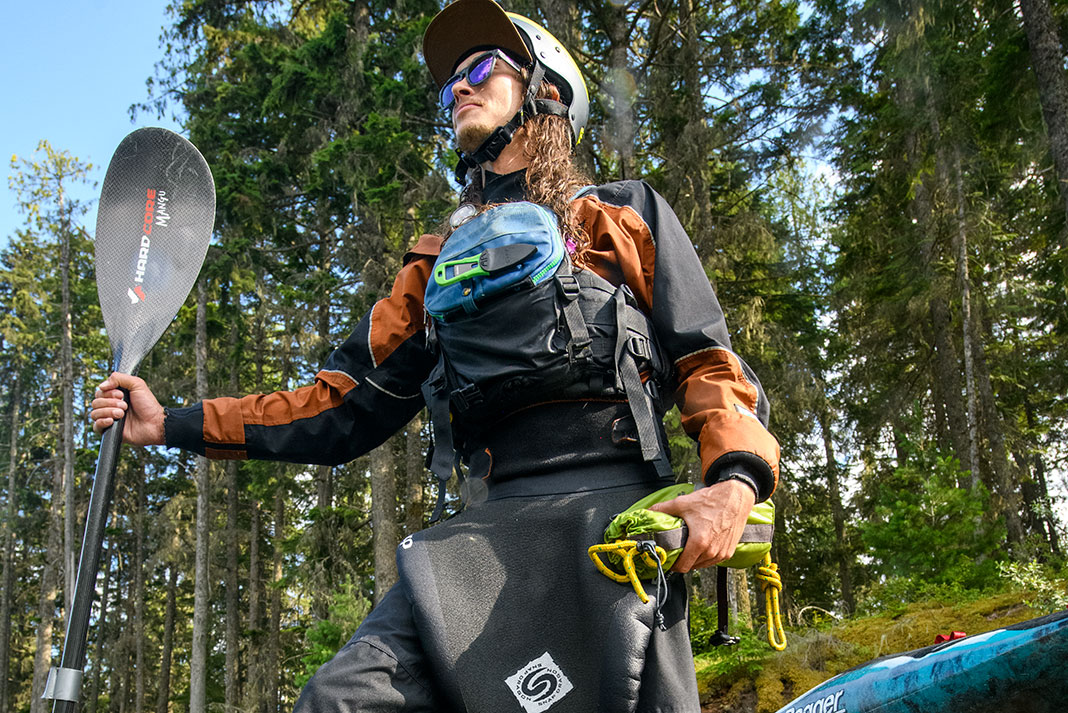
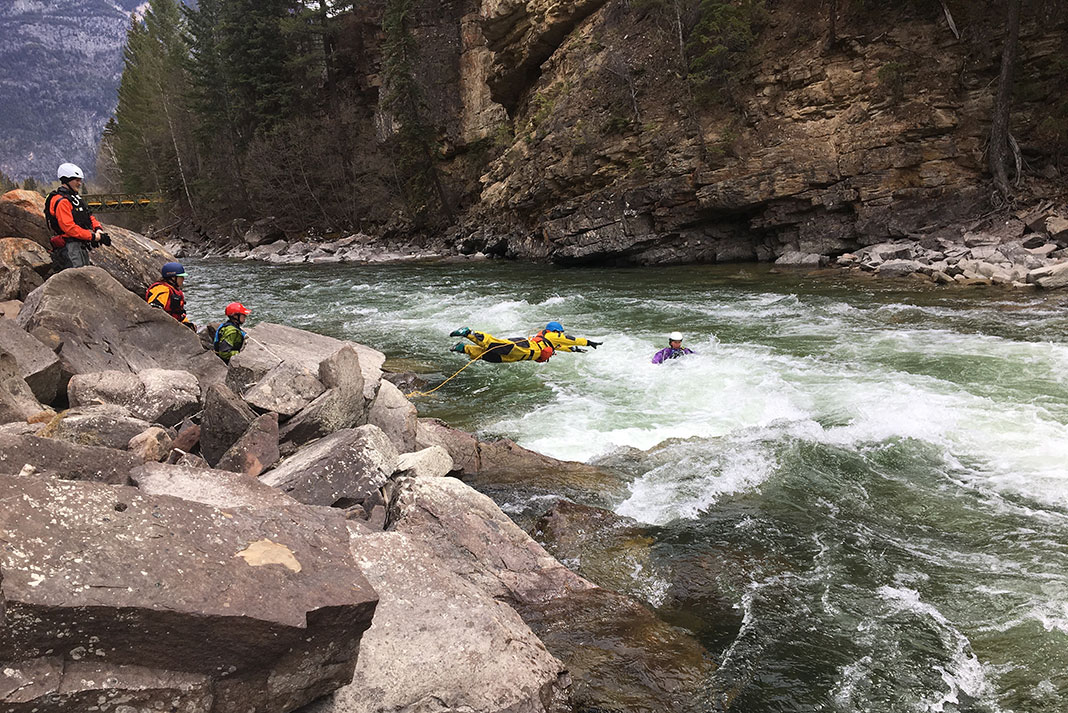
 This article was first published in the 2015 Paddling Buyer’s Guide.
This article was first published in the 2015 Paddling Buyer’s Guide. 